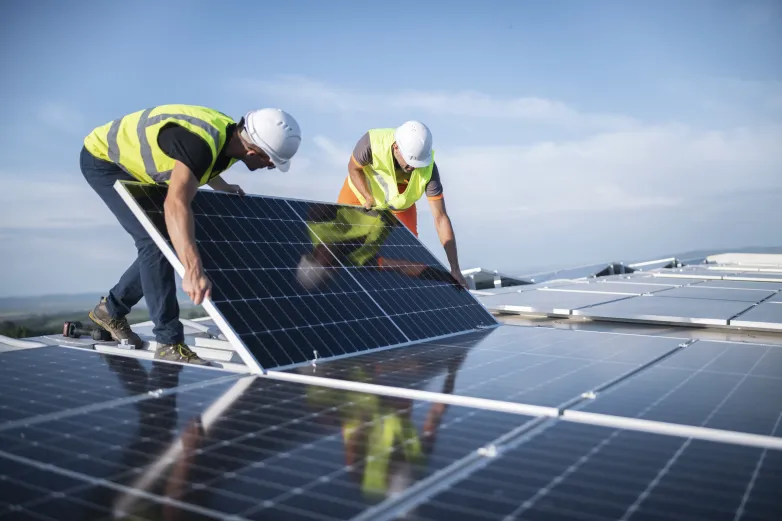Factors Influencing the Number of Solar Panels Needed for Your Home

As more homeowners in the US turn to solar energy to reduce their carbon footprint and save on energy bills, understanding how to calculate how many solar panels you need for your home is crucial. Several factors influence this calculation, ranging from household energy consumption to the physical characteristics of the installation site. This article will delve into these factors to help you determine the optimal number of solar panels for your home.
Household Energy Consumption
The first step in calculating the number of solar panels needed is assessing your household's energy consumption. This can be done by reviewing your electricity bills, which typically show your energy usage in kilowatt-hours (kWh) per month.
For example, if your household uses 900 kWh per month, you would need to generate that amount of energy to cover your consumption entirely with solar power. The average US household consumes about 877 kWh per month, according to the US Energy Information Administration (EIA).
Solar Panel Efficiency
The efficiency of the solar panels you choose plays a significant role in determining how many you will need. Solar panel efficiency refers to the portion of sunlight that a panel can convert into usable electricity. Panels with higher efficiency can produce more power per square foot, which means you will need fewer panels to meet your energy needs.
Modern solar panels have an efficiency rate between 15% and 22%. While high-efficiency panels are more expensive, they might be the best option for homes with limited roof space.
Roof Space and Orientation
The amount and orientation of available roof space are crucial factors. Solar panels require unobstructed access to sunlight to operate efficiently. Therefore, the size, shape, and pitch of your roof, as well as any potential shading from trees or other buildings, will impact the number of panels you can install.
South-facing roofs are ideal in the Northern Hemisphere as they receive the most sunlight throughout the day. However, east and west-facing roofs can also be effective, though they may require more panels to generate the same amount of electricity as a south-facing system.
Local Climate and Sunlight Exposure
The geographical location of your home significantly affects solar energy production. Homes in sunnier climates will need fewer panels than those in regions with less sunlight. For instance, a home in California will generate more solar power than a similar home in the Pacific Northwest due to the difference in average sunlight exposure.
You can use solar irradiance maps or tools like the National Renewable Energy Laboratory's (NREL) PVWatts Calculator to estimate the average solar energy your location receives. This data is essential for accurately calculating the number of panels needed.
System Losses and Performance Ratio
Solar power systems are not 100% efficient; various losses occur due to factors like inverter efficiency, temperature variations, and dirt on panels. The performance ratio (PR) of a solar power system, typically between 0.75 and 0.85, accounts for these losses.
For instance, if you need 900 kWh per month and your system has a performance ratio of 0.8, you would need to generate 900 kWh / 0.8 = 1125 kWh per month to account for system losses.
Future Energy Needs
When planning your solar power system, it's wise to consider any future changes in your energy consumption. This could include adding more electrical appliances, expanding your home, or purchasing an electric vehicle. Factoring in these potential increases will help ensure your system can accommodate future energy needs without requiring significant modifications.
Local Regulations and Incentives
Local regulations and incentives can also influence the number of solar panels you install. Some areas have limitations on the size of residential solar installations or specific requirements for grid interconnection. Additionally, incentives such as the federal Investment Tax Credit (ITC) or state-specific rebates can offset the cost of installing higher efficiency panels or a larger system.
Net Metering Policies
Net metering policies allow homeowners to sell excess solar energy back to the grid, which can reduce the number of panels needed to achieve energy independence. However, net metering policies vary by state and utility company. Understanding your local net metering regulations will help you optimize your solar power system and potentially lower your upfront investment.
Conclusion
Calculating the number of solar panels needed for your home involves a comprehensive assessment of various factors. By understanding your household energy consumption, the efficiency of available solar panels, roof space and orientation, local climate, system losses, future energy needs, and local regulations and incentives, you can make an informed decision that maximizes your investment in solar energy.
As solar technology continues to advance and become more accessible, homeowners across the US can take advantage of these insights to reduce their environmental impact and achieve long-term savings on their energy bills. With the right planning and consideration, harnessing the power of the sun has never been more attainable.
Also read
- How to Reduce Downtime in Solar Operations?
- Hyperparameter Tuning Good Practices for Robust Predictive Models
- 5 Critical Metal Forming Processes in Solar Panel Manufacturing
- Maximizing Efficiency with Low-Maintenance Solar Panel Systems
- Cyber Hygiene for Solar Companies: Protecting Your Data from Email Threats


